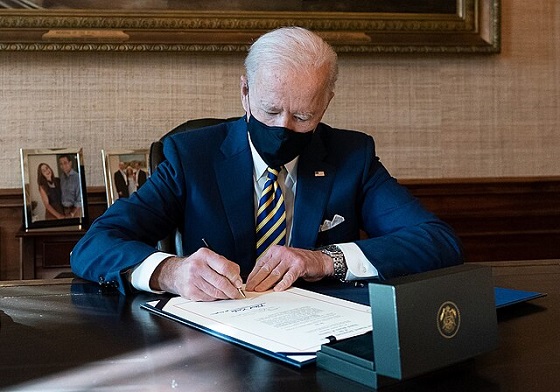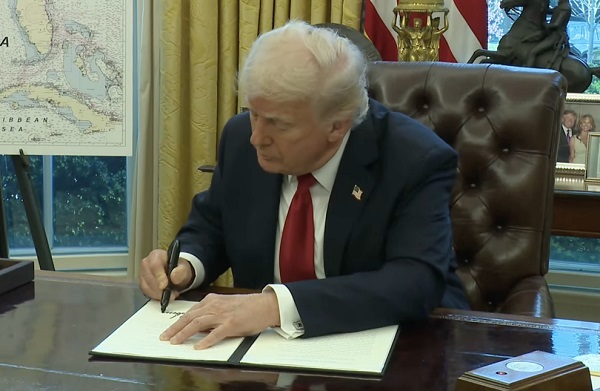Alberta
Response: This Is Why Geothermal Should Be Our First Choice When It Comes To An Energy Transition

I write in response to “CBC News Poll: Why the economic crisis could speed up transition to renewable energy” published recently:
(see: CBC News poll: Why the economic crisis could speed up transition to renewable energy)
Geothermal is the missing link in Earth’s energy mix. It’s the only scalable solution that is both clean and baseload. Without a clean baseload power source, the grid will struggle to replace all the legacy coal, gas and nuclear power, with just intermittent sources like wind and solar (even with better batteries than exist today).
Geothermal, however, can fill this gap. More importantly, we can do this not by importing windmills, solar panels and batteries from China, but by building on the same world-leading assets and expertise that sit idle in the oil service industry today. We can lead the world simply by using this expertise to convert our old abandoned well sites to geothermal use.
Even better, Eavor’s “made in Canada” solution (which is available to any Canadian developer), facilitates rapid scaling. In particular, Eavor’s technology eliminates or vastly reduces the need for exploration uncertainties, delays and costs. It also transforms geothermal from baseload to dispatchable. This allows Eavor to work much more synergistically with wind and solar where needed. Eavor’s technology, known as “Eavor-Loop™”, works by drilling a sealed well-bore loop which gently harvests geothermal heat over a large surface area simply through conduction. Without the need for a geothermal aquifer, this enables implementation almost anywhere in the world. In line with this, Eavor has assembled a multi-year, multi-billion-dollar prospect pipeline. These prospects are, however, all outside of Western Canada.
What will it take to enable Eavor, and other Canadian geothermal developers like Terrapin and DEEP, to bring this geothermal revolution home? The same thing that has nurtured successful and growing geothermal industries elsewhere – a combination of early grants and energy pricing that recognizes the advantages of green baseload power. Ideally these incentives would be modeled after the SDE+ system in the Netherlands, which is more efficient, but has the same net effect as a Feed-in-Tariff.
Our calculations are that, a geothermal “Moon Shot” for Western Canada with the above incentives, could easily attract $4 billion in foreign investment capital, to create 400 MW of clean, dispatchable power, all the while employing 5,500 oil service workers for 4 years. Larger plans could employ 25,000 for a decade or more. Such a plan would create a geothermal ecosystem in Canada that could lead the world and represent an entire new clean export industry. At Eavor, we believe that is a vision worth getting excited about. In short, the current situation doesn’t have to devolve into a fight between oil industry jobs or renewables. It doesn’t have to be a zero-sum game. With geothermal solutions like Eavor the same investment dollar can protect oil service jobs and improve the environment all at the same time.
To learn more about Eavor visit Eavor
For more stories, visit Todayville Calgary
Alberta
Alberta takes big step towards shorter wait times and higher quality health care

From the Fraser Institute
On Monday, the Smith government announced that beginning next year it will change the way it funds surgeries in Alberta. This is a big step towards unlocking the ability of Alberta’s health-care system to provide more, better and faster services for the same or possibly fewer dollars.
To understand the significance of this change, you must understand the consequences of the current (and outdated) approach.
Currently, the Alberta government pays a lump sum of money to hospitals each year. Consequently, hospitals perceive patients as a drain on their budgets. From the hospital’s perspective, there’s little financial incentive to serve more patients, operate more efficiently and provide superior quality services.
Consider what would happen if your local grocery store received a giant bag of money each year to feed people. The number of items would quickly decline to whatever was most convenient for the store to provide. (Have a favourite cereal? Too bad.) Store hours would become less convenient for customers, alongside a general decline in overall service. This type of grocery store, like an Alberta hospital, is actually financially better off (that is, it saves money) if you go elsewhere.
The Smith government plans to flip this entire system on its head, to the benefit of patients and taxpayers. Instead of handing out bags of money each year to providers, the new system—known as “activity-based funding”—will pay health-care providers for each patient they treat, based on the patient’s particular condition and important factors that may add complexity or cost to their care.
This turns patients from a drain on budgets into a source of additional revenue. The result, as has been demonstrated in other universal health-care systems worldwide, is more services delivered using existing health-care infrastructure, lower wait times, improved quality of care, improved access to medical technologies, and less waste.
In other words, Albertans will receive far better value from their health-care system, which is currently among the most expensive in the world. And relief can’t come soon enough—for example, last year in Alberta the median wait time for orthopedic surgeries including hip and knee replacements was 66.8 weeks.
The naysayers argue this approach will undermine the province’s universal system and hurt patients. But by allowing a spectrum of providers to compete for the delivery of quality care, Alberta will follow the lead of other more successful universal health-care systems in countries such as Australia, Germany, the Netherlands and Switzerland and create greater accountability for hospitals and other health-care providers. Taxpayers will get a much better picture of what they’re paying for and how much they pay.
Again, Alberta is not exploring an untested policy. Almost every other developed country with universal health care uses some form of “activity-based funding” for hospital and surgical care. And remember, we already spend more on health care than our counterparts in nearly all of these countries yet endure longer wait times and poorer access to services generally, in part because of how we pay for surgical care.
While the devil is always in the details, and while it’s still possible for the Alberta government to get this wrong, Monday’s announcement is a big step in the right direction. A funding model that puts patients first will get Albertans more of the high-quality health care they already pay for in a timelier fashion. And provide to other provinces an example of bold health-care reform.
Alberta
Alberta’s embrace of activity-based funding is great news for patients

 From the Montreal Economic Institute
From the Montreal Economic Institute
Alberta’s move to fund acute care services through activity-based funding follows best practices internationally, points out an MEI researcher following an announcement made by Premier Danielle Smith earlier today.
“For too long, the way hospitals were funded in Alberta incentivized treating fewer patients, contributing to our long wait times,” explains Krystle Wittevrongel, director of research at the MEI. “International experience has shown that, with the proper funding models in place, health systems become more efficient to the benefit of patients.”
Currently, Alberta’s hospitals are financed under a system called “global budgeting.” This involves allocating a pre-set amount of funding to pay for a specific number of services based on previous years’ budgets.
Under the government’s newly proposed funding system, hospitals receive a fixed payment for each treatment delivered.
An Economic Note published by the MEI last year showed that Quebec’s gradual adoption of activity-based funding led to higher productivity and lower costs in the province’s health system.
Notably, the province observed that the per-procedure cost of MRIs fell by four per cent as the number of procedures performed increased by 22 per cent.
In the radiology and oncology sector, it observed productivity increases of 26 per cent while procedure costs decreased by seven per cent.
“Being able to perform more surgeries, at lower costs, and within shorter timelines is exactly what Alberta’s patients need, and Premier Smith understands that,” continued Mrs. Wittevrongel. “Today’s announcement is a good first step, and we look forward to seeing a successful roll-out once appropriate funding levels per procedure are set.”
The governments expects to roll-out this new funding model for select procedures starting in 2026.
* * *
The MEI is an independent public policy think tank with offices in Montreal, Ottawa, and Calgary. Through its publications, media appearances, and advisory services to policymakers, the MEI stimulates public policy debate and reforms based on sound economics and entrepreneurship.
-

 Also Interesting2 days ago
Also Interesting2 days agoMortgage Mayhem: How Rising Interest Rates Are Squeezing Alberta Homeowners
-

 Alberta2 days ago
Alberta2 days agoAlberta takes big step towards shorter wait times and higher quality health care
-

 Business2 days ago
Business2 days agoStocks soar after Trump suspends tariffs
-

 COVID-192 days ago
COVID-192 days agoBiden Admin concealed report on earliest COVID cases from 2019
-

 Business2 days ago
Business2 days agoTrump raises China tariffs to 125%, announces 90-day pause for countries who’ve reached out to negotiate
-

 Business2 days ago
Business2 days agoScott Bessent Says Trump’s Goal Was Always To Get Trading Partners To Table After Major Pause Announcement
-

 2025 Federal Election1 day ago
2025 Federal Election1 day agoResearchers Link China’s Intelligence and Elite Influence Arms to B.C. Government, Liberal Party, and Trudeau-Appointed Senator
-

 Energy2 days ago
Energy2 days agoTrump signs four executive orders promoting coal industry





